NL2, NL4, and NL8 (or SpeakON) connectors are the industry standard in pro audio for connecting amplifiers to speakers.
They establish a very secure connection on both ends with a twist-lock feature. This makes them much safer and much more reliable than ¼-inch speaker cables, or other connections you might find on amplifiers and speakers.
In this post, you’ll learn the difference between these three types of SpeakON connectors (NL2, NL4, and NL8) and how to decide which one you should use.
What Is The Difference Between NL2, NL4, & NL8?
The main difference between NL2, NL4, and NL8 connectors is the number of speaker circuits each connector is capable of facilitating.
A speaker circuit consists of two wires – a positive and a negative. When talking about SpeakON connectors, this pair of wires is called a “pin set”.
NL2 connectors have one pin set, which allow for one speaker circuit; NL4 connectors have two pin sets, which allow for two speaker circuits; and NL8 connectors have four pin sets, which allow for four speaker circuits.
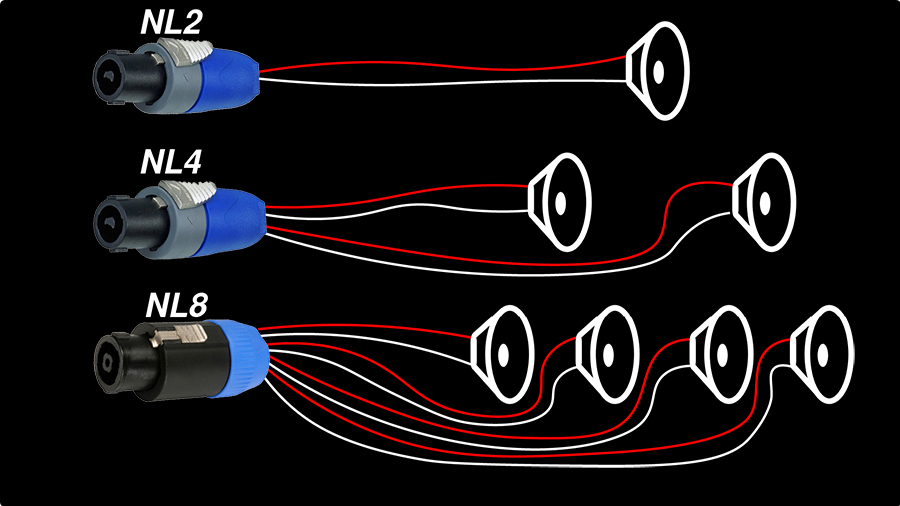
In order to utilize the full potential of each connector, the cable you choose must have a conductor for each pin in the connector.
If I open up these three types of cables, we’ll see that NL2 cables have two conductors, NL4 cables have four conductors, and NL8 cables have eight conductors.

SpeakON connectors will have either a solder cup or a small captive screw type connection, which makes it easy to build your own speaker cables and repair them over time.
When building them, you just need to make sure that you connect the positive and negative terminals of each pinset to the appropriate terminal on each side of the cable.
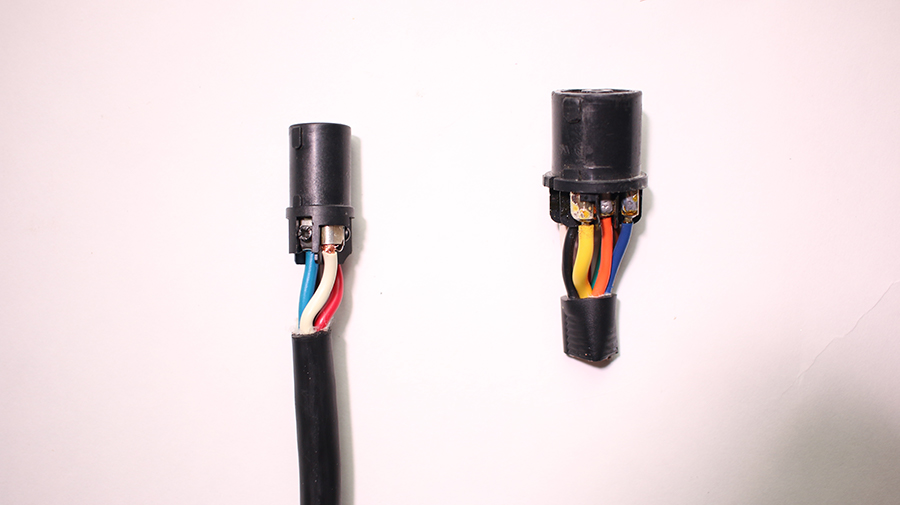
You’ll notice that the NL8 is larger, but the NL2 and NL4 connectors are the same size. It’s important to note that you can plug an NL2 into an NL4 jack, but you cannot plug an NL4 into an NL2 jack.
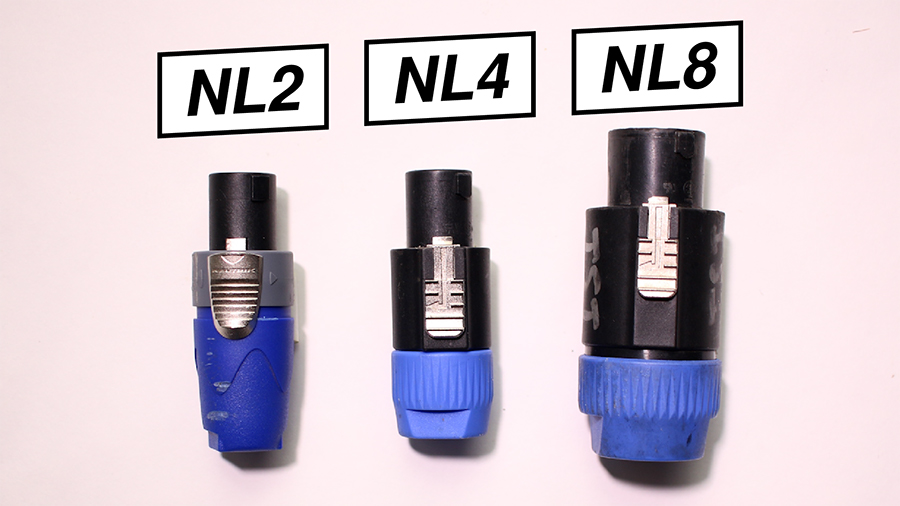
When To Use NL2, NL4, & NL8
SpeakON connectors are usually seen on live production equipment, because they are both secure and easy to connect and disconnect. ¼-inch connectors are prone to accidental disconnection, while the speaker terminal connectors you’ll find on home theater and installed amplifiers are impractical for repeated setup and tear down.
Choosing which SpeakON connector to use will depend on the situation.
#1: One Speaker, One Amplifier Channel
First, imagine a simple setup with one speaker and one amplifier.
Using a single cable, you can connect the output of the amplifier to the input of the speaker. That is, if you’re powering a speaker with a single amplifier channel.
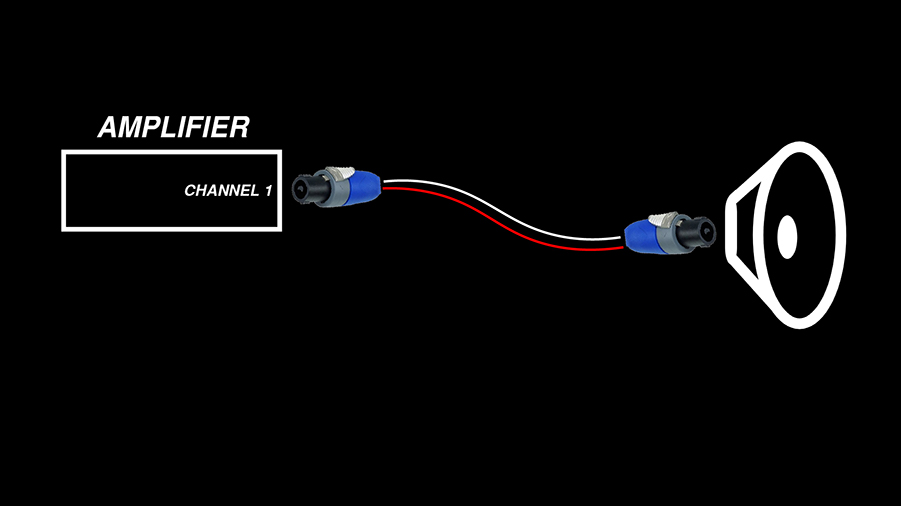
#2: Multi-Way Speaker, Multiple Amplifier Channels
Many speaker cabinets contain multiple loudspeaker drivers. In some cases, you might use a separate amplifier channel for each driver within the cabinet.
For example, connecting a 2-channel amplifier to a 2-way speaker with an NL4 cable could allow you to power each driver with a separate amplifier.

The same thing could be done with an NL8 cable if you’re using a 4-channel amplifier and a 4-way speaker cabinet.

If you are driving each loudspeaker in a cabinet separately, it’s important to set up an active crossover within the amplifier DSP or before the signal reaches the amplifier. In short, a crossover protects and optimizes each driver by distributing the high and low frequencies appropriately.
You can learn more about speaker crossovers in this post I wrote on the Audio University website.
#3: Multiple Speakers, Multiple Amplifier Channels
Let’s say you’ve got a separate subwoofer cabinet and main speaker cabinet on each side of the stage.
Instead of running a separate NL2 cable from the amplifier to each cabinet, you could use one NL4 cable, which could carry the subwoofer signal on pin set 1 and the main speaker signal on pin set 2.
The NL4 cable could connect to the subwoofer, which would be driven by pin set 1 and the pass thru on the subwoofer could be connected to the main speaker which would be driven by pin set 2.
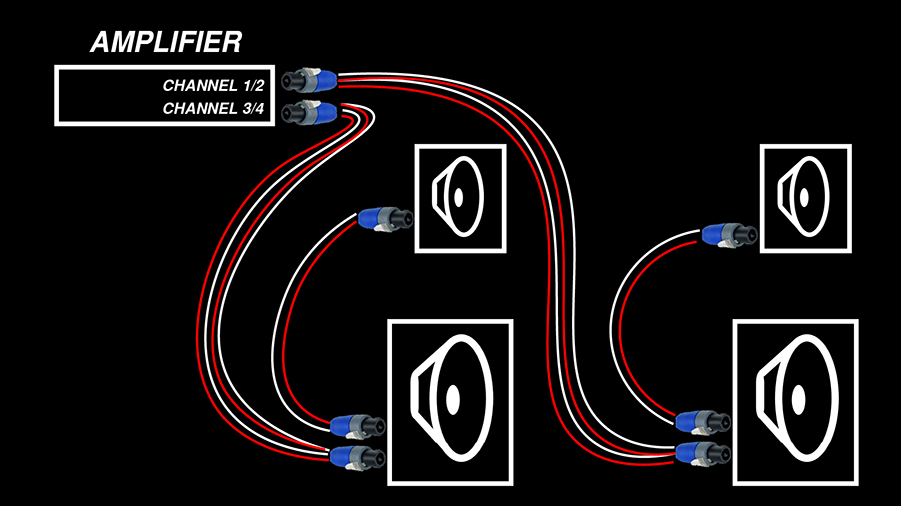
#4: SpeakON Breakout Adapter Cables
You can also use SpeakON breakout cables to adapt NL4 or NL8 connectors to another type of SpeakON connector. I’d recommend something like this Sescom NL4 breakout adapter if you’re looking for something that will last and be easy to repair.
Let’s say you’ve got one amplifier that will be powering two stage monitors. In this example, we’ll assume that each stage monitor has an NL2 connector and the amplifier has a single NL4 connector.
Using an NL4 to dual NL2 breakout cable, you can split the two amplifier channels that were running through the single NL4 connector out to two separate NL2 connectors.

Choosing The Right Amplifier & Speakers
Deciding which speaker cable connectors you’ll need starts with choosing the right amplifier and speakers for the situation.
I want to help you design your system. FIrst, check out my free Speaker Specs Guide that will help you understand the most important specifications to consider when choosing speakers.
To choose the right amp for your speakers, read this post I made a few weeks ago. You’ll learn how much power is recommended from your amp based on your speakers specifications.
